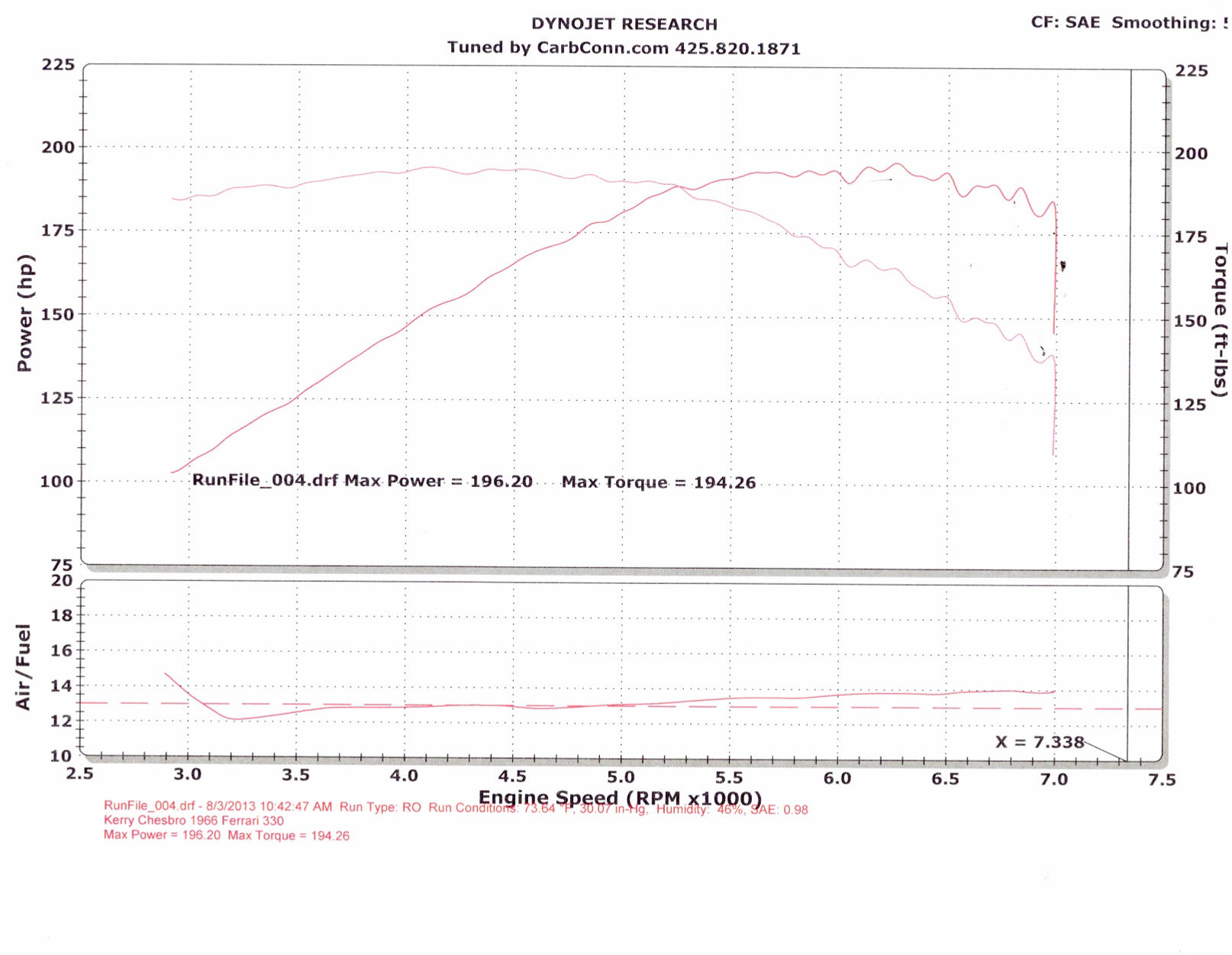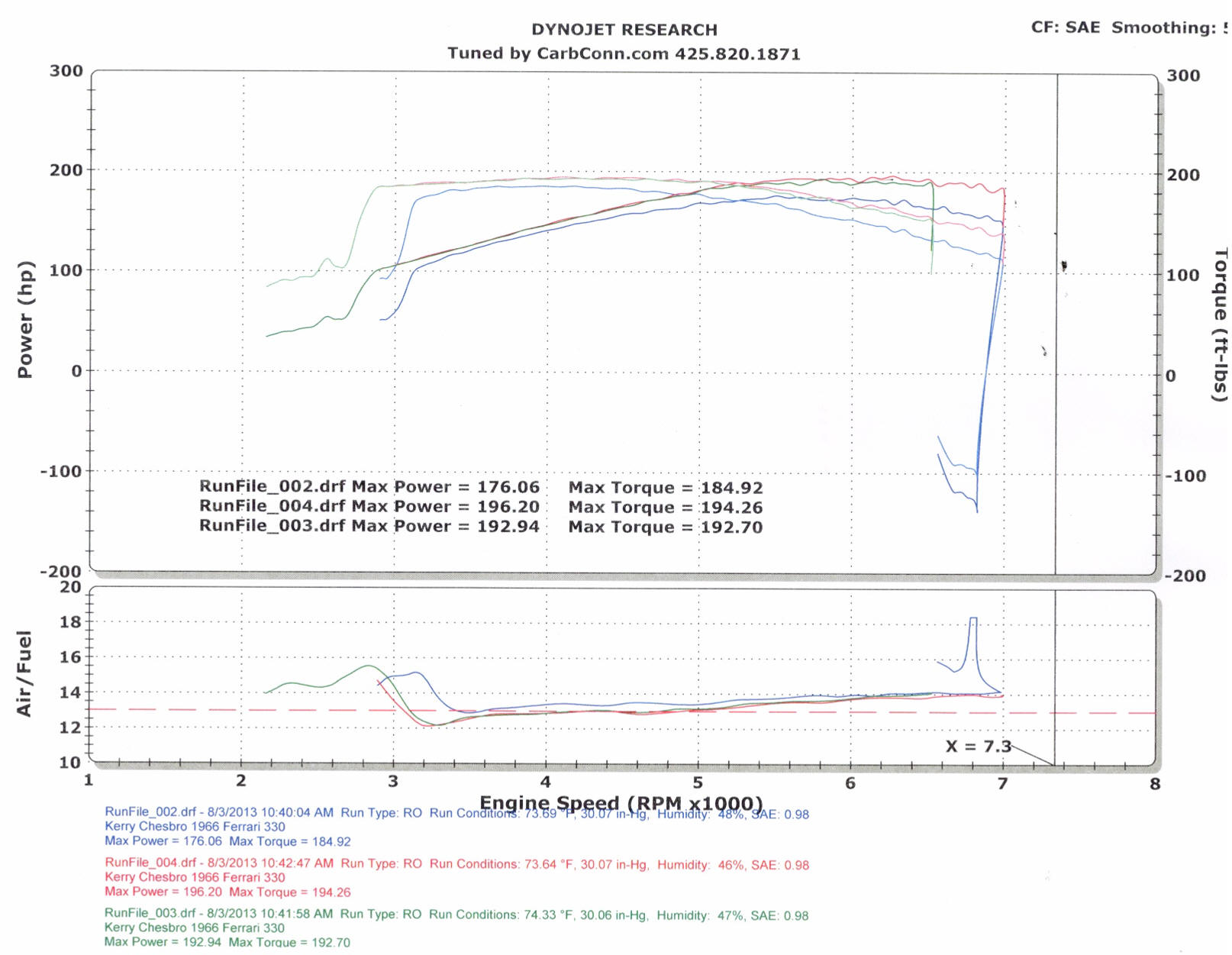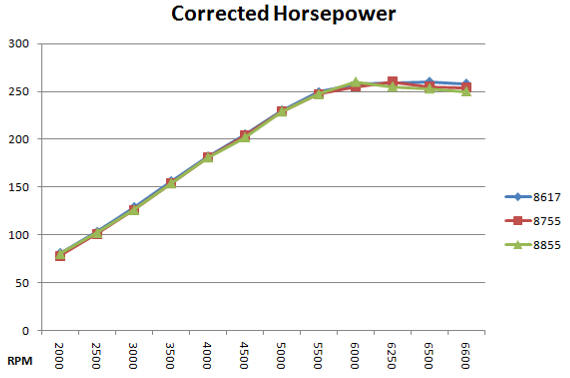Dynamometer Testing
The NW region of the FCA periodically has a dyno day at a local shop. I never took the 330 GT as I was worried about something (like the engine) breaking under the stress. But this year, I decided to do it.
As I had never had a car dynamometer tested or even watch it being done, I was surprised at how little stress the car is actually under.
To start, you drive the car up on the roller, so the rear tires are resting on top. The techs put bands around the rear (differential in the 330 case) and front (lower A arms) to tie it down in case something bad happens. A lead to detect RPM is attached around a plug wire and an air mixture sensor in put into the exhaust pipe. Actually, not much different from the smog testing for cars before ODB2.
Then you start in first, slowly go through the gears until 4th on the 330. At a signal, you use full throttle to the redline and then back off. My first run came out 172 horsepower. The next runs were done in third as fourth was a little too tall of a gear. The second run was 196 horsepower and the third at 193 horsepower. A little disappointing as Ferrari claimed 300 HP (at 7000 RPM) new, probably ~270 real horsepower. So I was expecting around 220 HP at the rear wheels, given the normal 15-20% loss in the drive train. I only went to 6600 (start of red line area) in the first run, but to 7000 on the next two.
So, the engine is really only at full throttle for 20 seconds or so, not much different than punching it when entering a freeway.
Here it the graph from the highest HP run (2nd):

As you can see, the max HP was at about 6250 RPM with the max torque at 4100 RPM. The air fuel mixture was a little rich below about 3500 RPM, but lean after 5000 RPM. One thing I didn't think about was to have them move the sensor to the other side between runs. So this AFM was only for the L bank. It would have been interesting to see the numbers for the R bank. A 512BBi was tested later and I suggested to the owner that he have both side tested. One bank on his was spot on, while the other was off a little. So he changed the mixture a little (1/16th turn) on that bank before another run. Based on the new reading, he thought that he needed another 1/16 of a turn. He had adjusted his mixtures by ear, so was quite pleased how close they were.
Here are the three runs together:

The green is the first run (where I stopped a 6600 RPM as you can see where the green line drops), red the second (max HP) and blue the third. The second and third runs were close to identical. Evidently, the oil wasn't fully warmed up on the first run, hence the lower values.
I have the build sheet for 8755, so previously I've plotted the horsepower as measured by Ferrari when the engine was built:

Now, these numbers are engine horsepower, not at the rear wheels. So when new, my engine topped out at 260 HP at 6250 RPM. So a 15% loss would be 221 and 20%, 208. That makes 196 a little low, but no wildly out of bounds. For more information this, see the horsepower page where this data was derived from the build sheets.
The only place I found torque values was in the English 330 GT service manual. There it was 271 ft. lbs. at 5000 RPM. However the same table had the horsepower as 345, so I'm not sure whether to believe the 271 or not. The original Italian service manual did not have that table. However, applying the 260/300 ratio (real/claimed HP), gives 234 ft. lbs. of torque. So the 194 measured on the second run is clearly within typical drive line loss.
BTW, a 458 Italia was the high roller with 457 measured horsepower (vs. 560 HP at the engine per Ferrari). I did beat a Lamborghini Isolero which measured 193 HP with an original 320 HP as claimed by Lamborghini.